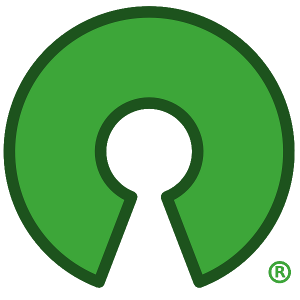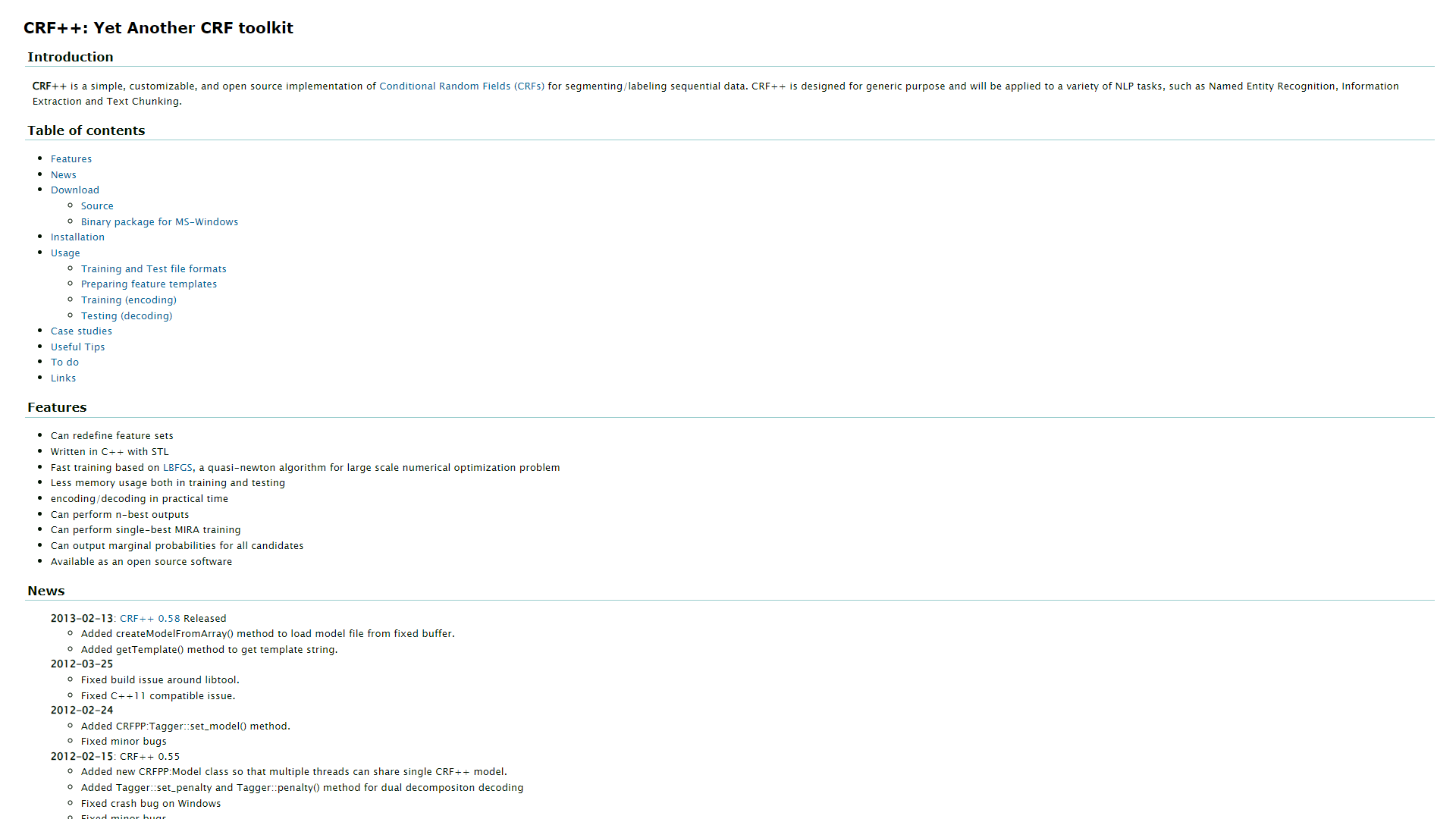
CRF++
CRF++ is a simple and effective tool for creating Conditional Random Fields.
🏷️ Price not available

- Overview
- Pricing
- Features
- Pros
- Cons
Overview
CRF++ is an open-source software toolkit designed for building Conditional Random Fields (CRFs) for various machine learning tasks. It allows users to efficiently develop and train models for sequence labeling and other related tasks. With its straightforward design, CRF++ is user-friendly and adaptable to different applications in natural language processing and computer vision.
The core functionality of CRF++ is its ability to model complex relationships in data using probabilistic graphical models. The toolkit supports high-dimensional features and allows users to define their own feature functions. This flexibility makes CRF++ a popular choice for tasks like named entity recognition, part-of-speech tagging, and image segmentation.
CRF++ is written in C++ and provides a simple command-line interface. While it requires some technical understanding, its extensive documentation and active user community make it accessible for both beginners and experienced practitioners in the field of machine learning.
Pricing
| Plan | Price | Description |
|---|
Key Features
🎯 User-friendly interface: CRF++ is designed with a simple command-line interface that makes it easy to use for both beginners and experts.
🎯 Open-source: Being open-source means that anyone can use, modify, and contribute to its development.
🎯 Flexibility in feature definition: Users can define their own feature functions, allowing for complex representation of data.
🎯 Support for high-dimensional data: CRF++ can handle large-feature spaces effectively, which is crucial for processing complex datasets.
🎯 Active community: A strong user community provides support and resources, making it easier to find help and share knowledge.
🎯 Efficiency: CRF++ is optimized for speed and memory usage, enabling users to work with large datasets more effectively.
🎯 Integration capabilities: It can be easily integrated with other tools and libraries in the machine learning ecosystem.
🎯 Extensive documentation: Comprehensive guides and documentation are available, making it easier to learn and troubleshoot.
Pros
✔️ Versatile application: CRF++ can be used in various fields, including natural language processing and computer vision.
✔️ High performance: The tool is designed for efficient computation, making it suitable for large-scale problems.
✔️ Customizable: Users can tailor the models and feature functions to fit their specific needs.
✔️ Strong community: The active user forum provides valuable assistance and resources for new users.
✔️ Educational resources: There are many tutorials and examples available, which help users learn how to use CRF++ effectively.
Cons
❌ Steep learning curve: New users may find it challenging to understand the underlying concepts and setup.
❌ Limited graphical interface: The command-line focus may deter some users who prefer GUI-based tools.
❌ Dependency on C++: Users should have some familiarity with C++ for effective use and customization.
❌ Performance on small datasets: CRFs are primarily designed for larger datasets, which may limit effectiveness for smaller ones.
❌ Complexity in feature engineering: Crafting the right feature set can be complicated and require expertise.
Manage projects with Workfeed
Workfeed is the project management platform that helps small teams move faster and make more progress than they ever thought possible.
Get Started - It's FREE* No credit card required
Frequently Asked Questions
Here are some frequently asked questions about CRF++. If you have any other questions, feel free to contact us.